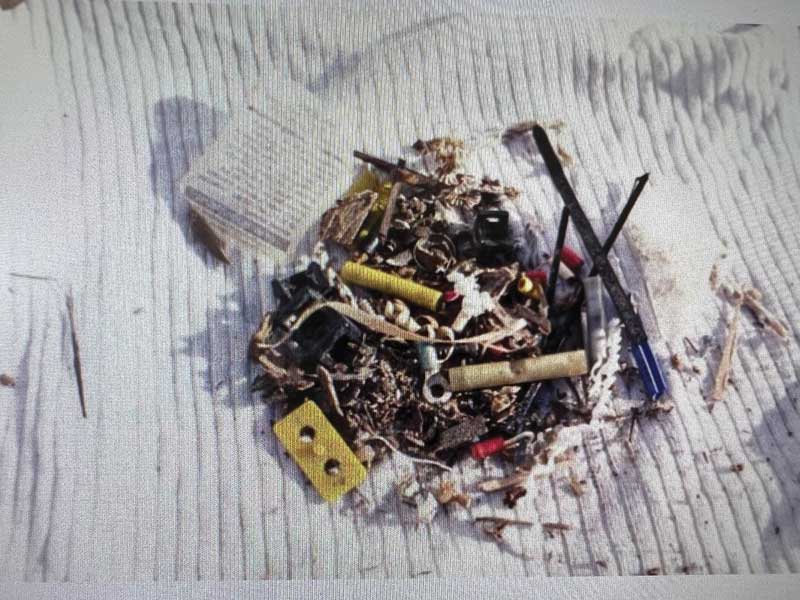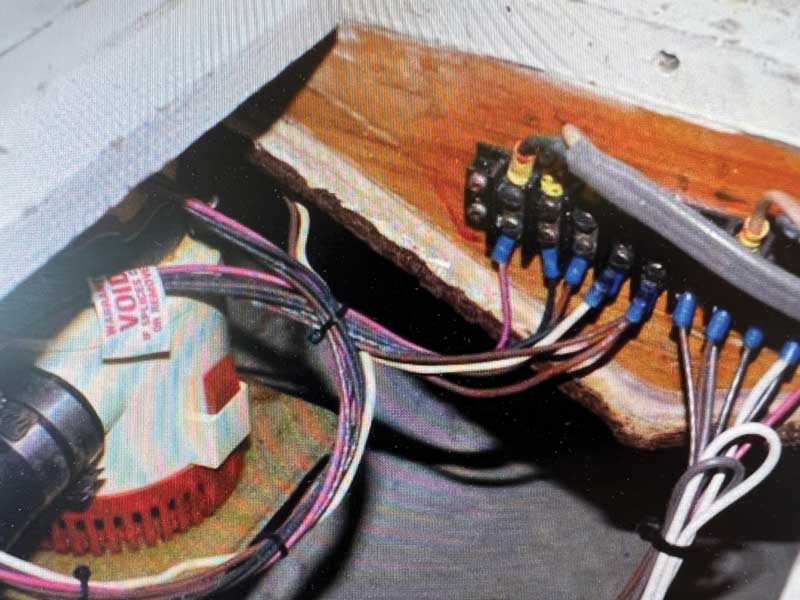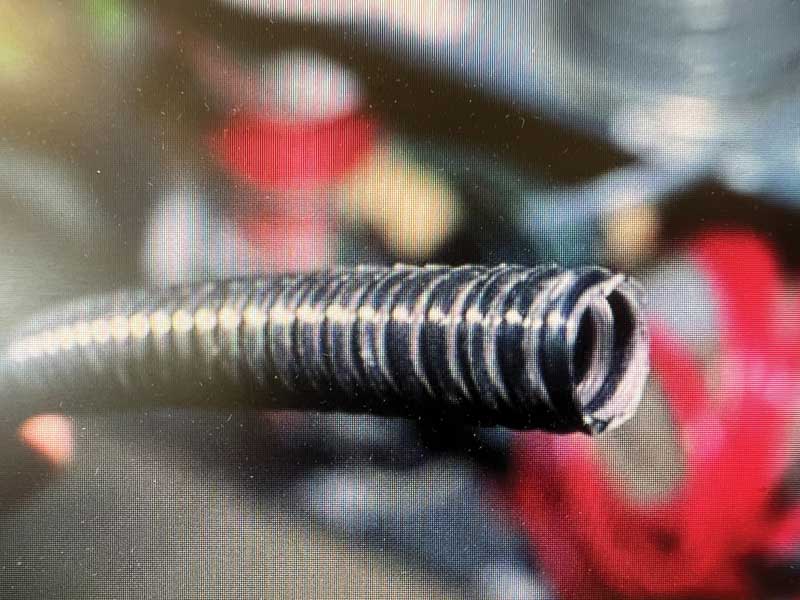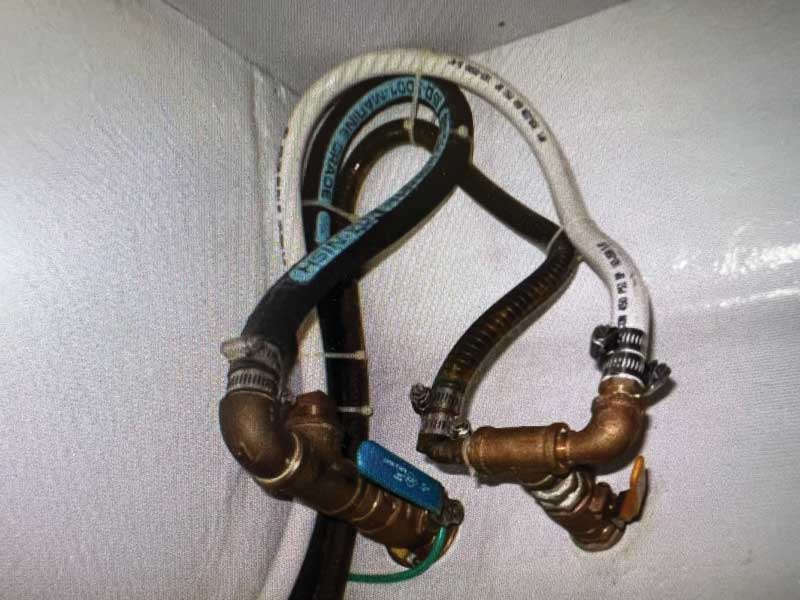One of the most overlooked systems on your vessel is the bilge pumps. We tend to forget about them until they are really needed, and most boat owners don’t think about the maintenance of this critical system.

Let’s go over the basics.
We need to understand first that bilge pumps are not designed to keep a vessel from sinking but rather address the normal ingress of water that occurs in most vessels. For example, accumulation of rain, shaft seal leakage, condensation from air conditioning systems, and small, leaky fittings. These pumps are not going to help with large catastrophic leaks (another topic for a later time).
Most bilge pumps that we use tend to be the centrifugal type, meaning they must be submerged and can only push water. The benefit to this is that you get a small-sized pump relative to the volume it can pump. In some applications we can use diaphragm-type pumps, especially if the bilge space won’t allow for a pump. Keep in mind that you will have to install an inlet filter on the suction side to protect the pump from debris. Another point to keep in mind is that bilge pumps are only good for so many cycles of runtime as they are sealed motor pumps.
An important part of a reliable bilge pump is to have a clean bilge; you don’t want debris to collect as it can damage the pump or inhibit its ability to pump. Wire tie ends are a killer of many pumps—neatness counts!

Location and Wiring
The location of pumps is also of great importance. They need to be located where they can do the maximum job and need to be easily accessed for service. They may need to be mounted on a long bracket for access. When considering brackets, don’t use metal or wood as they can deteriorate or corrode from saltwater and harsh corrosive liquids (soaps, chlorine) that wind up in the bilge, ultimately damaging the pump. Plastic brackets are a better choice.
When wiring bilge pumps, it needs to be done in accordance with current American Boat and Yacht Council (ABYC) marine standards. Ensure you are using marine-grade wire and components. Also check that you have the proper wire gauge for the rated amperage draw of the pumps; there is a standard ABYC color code for bilge pump wiring you should follow. Any connections made must be as high as possible to avoid getting wet, while also using heat shrink type connectors.

I prefer using a terminal strip to make the connections for serviceability. This eliminates having to cut wiring when servicing or replacing pumps (which will happen, count on it!).
Use the correct rated fusing for the given pump, label your wire for reference, make sure switches to identify the bilge pump are well labeled, and mount it in an accessible and visible area.
Plumbing
The other important part of bilge pumps is plumbing. Let’s start with hose types.
Choosing the right hose is critical; we want a hose that is resistant to oils and chemicals and one that is flexible.
My preferred choice is a marine vinyl hose with a smooth wall inside, either sanitation style or the clear bilge/drain hose. Avoid rubber hoses as they don’t hold up well with oil and chemicals and are more likely to deform and degrade.

The other option is the cheap bilge hose with ribbed plastic. It’s not smooth on the inside and does not last well. It is also easily crushed or kinked. A good quality hose and components will give you a reliable service life.
Checking valves in some applications may be necessary if there is a long hose run, and you get cycling due to spill back. Although not recommended, it can be done; you just need to use the correct type of check valve (there are brands available for this application), something that will require a bit more maintenance. Hose runs need some planning and, in some cases, you may have to install a vented loop to prevent siphoning at the discharge thru-hull fitting. This is mainly needed if discharge is close to the waterline or can be submerged during heeling of the vessel. The hose run in these cases needs to be routed as high as possible and then drop down to the thru-hull.
I have seen plenty of vessels sink due to siphoning from a bilge pump discharge from poor installation, both by manufactures and service yards. Bilge pumps will give you the max run and head lift that they can do, so be careful to follow installation guides for safe and reliable operation. You should also install a secondary pump a bit higher than the primary pump as a backup and also add an alarm for the float switch. You can never be too careful.

So as a reminder, check and service your bilge pumps often for good measure. Know that they do not last forever; they are designed to fail eventually (these manufacturers are of course in the business of selling bilge pumps).
There are a lot of factors that come into play in this simple system, so plan accordingly and enjoy the boating season!
By Erik Lostrom, Marine Trades Coordinator at Chesapeake College